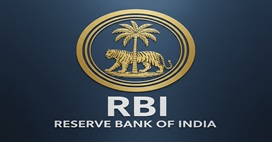28 September, 2025
RBI Issues Seven Directives for Banks and Other Regulated Entities
Wed 01 Oct, 2025
Context:
- The Reserve Bank of India (RBI) issued seven directives/circulars for banks and other regulated entities on 29-30 September 2025, of which three key directives came into effect from 1 October 2025.
Key Points:
- The directives mainly relate to interest rates on advances (loans), lending against gold and silver, and capital regulation.
- Public comments have been invited on four draft guidelines, which can be submitted by 20 October 2025.
- These changes aim to provide greater flexibility to banks, benefit borrowers, and strengthen the financial system.
Key Directives Effective from 1 October 2025:
Changes in Gold-Silver Pledge Loan Rules:
1. Expansion of Loans for Industrial and Manufacturing Use:
- Old Rule: Lending against gold/silver was mainly restricted to jewellers.
- New Rule (Effective): Banks, including Tier-3 and Tier-4 urban cooperative banks, can now provide working capital loans to all borrowers using gold or silver as raw material in manufacturing or industrial processes.
- Condition: Banks must ensure that borrowers do not purchase or hold gold/silver for investment or speculative purposes.
2. Change in Loan-to-Value (LTV) Ratio (Proposed):
- LTV: This ratio indicates the maximum loan that can be provided against the value of pledged gold.
- Proposed Change: Increase in LTV ratio for small gold loans:
- For loans up to ₹2.5 lakh, LTV is proposed to increase from 75% to 85% (including interest).
- Benefit: This will allow small borrowers, especially in rural areas and small towns, to receive a higher portion of gold value as loans.
3. Draft Guidelines and Other Proposals:
- Gold Metal Loan (GML) Repayment Period: Proposed increase for jewellers from 180 days to 270 days.
- Non-Manufacturer Jewellers: Domestic non-manufacturer jewellers outsourcing jewellery production may also be allowed to take GML.
Amendments in Floating Rate Loan Rules:
1. Flexibility in Spread:
- Old Rule: Banks could revise spread components (apart from credit risk premium) only once in three years.
- New Rule: Banks can now reduce spread components before the three-year period in a non-discriminatory manner to benefit and retain customers.
- Benefit: This allows banks to reduce interest rates (and EMIs) for existing customers promptly if the RBI reduces the repo rate.
2. Option to Switch to Fixed Rate:
- Old Rule (from August 2023): EMI-based personal loans required borrowers to be offered the option to switch from floating to fixed rate during interest rate reset.
- New Rule: This option is now at the discretion of the bank. Banks may provide it as per their policy; it is no longer mandatory.
- Benefit: Provides banks flexibility to manage risk as per their strategies.
Other Key Changes (Proposed and Effective):
- Prepayment/Foreclosure Charges: RBI has already prohibited prepayment or foreclosure penalties on non-commercial, floating-rate personal loans.
- Gold and Silver Loan Rules: Banks and Tier-3/Tier-4 urban cooperative banks can provide working capital loans to industries using gold/silver as raw material (previously restricted to jewellers).
- Credit Reporting: RBI has proposed that credit institutions submit data to credit bureaus weekly instead of fortnightly, improving accuracy and timeliness.
- Capital Regulation (Basel III – Additional Tier 1 Capital – Perpetual Debt Instruments), 2025:
- This change primarily provides banks greater flexibility in raising Additional Tier 1 (AT1) capital from foreign markets.
- Key Change: Revision of eligible limit for issuing perpetual debt instruments (PDIs) as AT1 capital, especially for instruments issued in foreign currency or as rupee-denominated overseas bonds.
- Objective: To allow scheduled commercial banks (excluding RRBs) greater scope to access international capital markets.
- Impact: Enhances banks’ AT1 capital base and helps meet Basel III capital adequacy norms more effectively.
Draft Guidelines (Feedback Invited):
- Credit Information Reporting Amendments: Weekly submission to credit bureaus (instead of fortnightly), mandatory error correction, faster data submission, and CKYC number capture.
- Large Exposure Framework (LEF) and Intra-Group Exposure: Clear rules for exposure calculation, risk hedging, and thresholds for foreign banks linked to Tier-1 capital.
- Gold Metal Loan (GML) Scheme: Additional guidelines for gold loans.
- Others: Clarity on intra-group exposures.
- Analysis: These drafts aim to make the credit system more accurate and up-to-date, prevent fraud, and simplify KYC via CKYC. Weekly reporting will improve credit scoring but increase compliance burden for banks.
Other Important Changes:
- Improvements in communication and processes between banks and regulators.
- Amendments in banking charges, NPS pension rules, and railway ticket booking regulations.
- The UPI collect request feature will be discontinued to reduce fraud risk.
- Increased supervision to correct errors in positive credit information management and consumer records.
Reserve Bank of India (RBI)
- Established: 1 April 1935 under the RBI Act, 1934
- Nationalization: 1949
- First Governor: Sir Osborne Smith (1935-1937)
- First Indian Governor: C.D. Deshmukh (1943-1949)
- Headquarters: Mumbai, Maharashtra


















